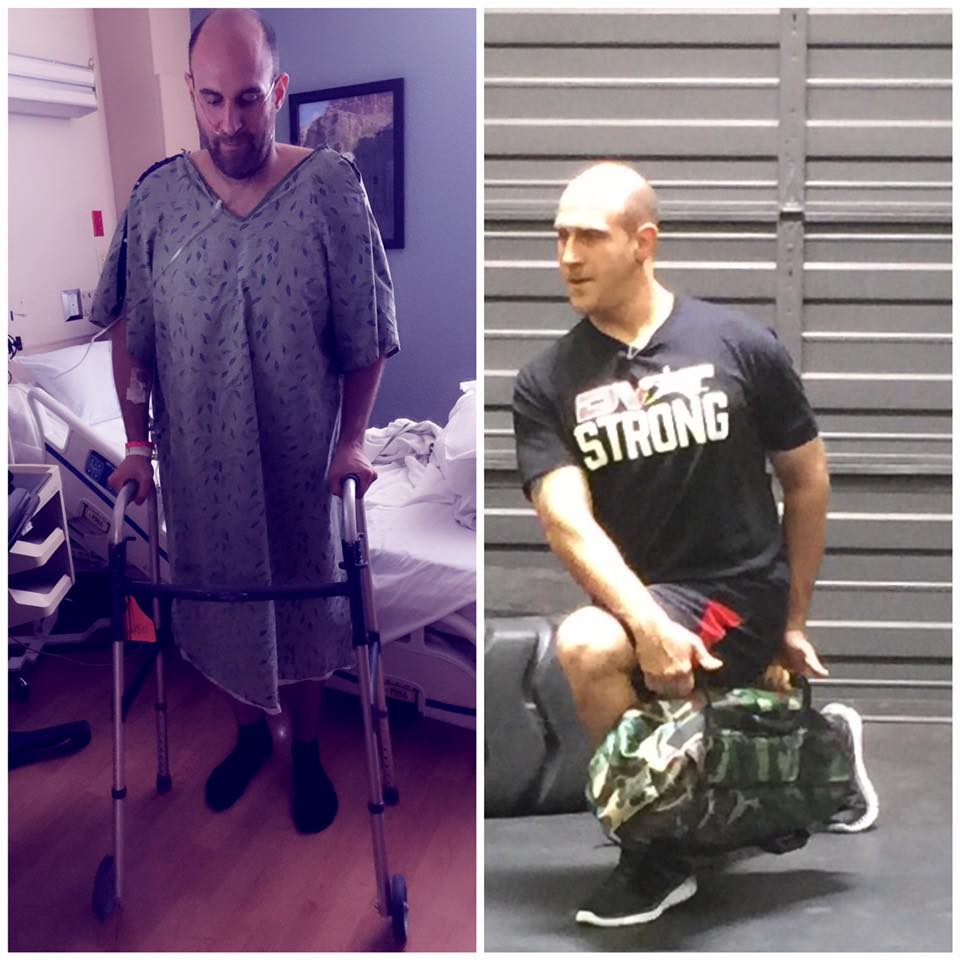The Highest Level of Core Training
2019-05-26
We spend A LOT of time talking about core training. It isn’t just because we are trying to hit on some buzz words, it IS because it doesn’t matter if you want a stronger squat, better pull-ups, less back pain, or more resilient knees, it largely comes back to core training.
That is something that many just don’t get. The use of the term “core” wasn’t just a modern replacement of abs. It reflected our greater understanding of how muscles worked together to help us create movement. If anyone gets the difference it is Jessica and myself!

Obviously with my spinal issues, I get the relevance of core training all the time. When I was first going through spinal rehab after my lumbar fusion, the physical therapist wanted me to do a bird dog. I was pumped, I knew a bird dog, I had given them numerous times to clients. Alright, I was all set, ready to move my arm and leg and………
NOTHING!
The therapist asked me to start and I sat there on all fours saying I was. Having my abdominal wall and back cut made my core SO weak that my body would NOT allow my arm or leg to move. Your body is smart, it wants to be safe, it wants to live a long time. In order to do so it will stop you well before you may want!
We have spent A LOT of blog posts discussing how to build a great foundation to your core training, but what about working at higher levels? A lot of people get stuck in doing novel, “circus tricks” in the name of advanced core training because they simply don’t understand what we are actually trying to accomplish.
In order to understand what we should strive for in more advanced core training I’ve broken it down into 3 really important concepts.
You Can’t Just Be Tight
Planks, bird dogs, drags, etc. They are all AWESOME ways of building foundations of core training, but we can’t live on just those drills. That is because they rely on high tension. Yes, high tension is key for beginners and to spend time upon because tension is stability and stability is strength.

However, when we move in life, we want a balance of relaxation and tension. This is often referred to “reactive” core training. The difference is knowing WHEN to get tight and how to balance that with moments of relaxation.
Spine expert, Dr. Stuart McGill says it perfectly….
“Many train speed by using resistance exercise for strength gain. But speed technique, when measured, also usually requires superior rates of relaxation. This apparent paradox can be exemplified this way. Consider the golf swing. The initiation of the downswing involves some muscle contraction but too much actually slows the swing. Speed comes from compliance and relaxation. At the instant just before ball contact, the farthest ball hitters in the world then undergo a full-body contraction that creates super-stiffness throughout the entire linkage.”
Your Opposite Hip and Shoulder Is Connected Via The Core
It is super odd to me that some people in fitness like to tell people “just ignore science”. Not really sure why other than people want to just keep doing what they want to do even if science doesn’t make it a lot of sense. A great example is fascial lines and their simple guide to help us understand how the body is connected.

You see images like these all the time and the MOST important aspect to appreciate is that our lower body and upper body is connective via our core. More specifically, our body is designed to work in opposites which if you don’t believe me, just start walking and see how your opposite arms and legs work together.
This is why famous physical therapy systems like PNF have used diagonal patterns to restore function to patients. We see this often in exercises like lifts/chops, but as you will see we have an opportunity to make them WAY better!
The Highest Level of Core Training Has Us Producing and Resisting Force As We Move
In fitness we talk a lot about using training that helps us better at life, but we often don’t see our training look like much of what life or sport actually demands. Our complex movements in life and sport get minimized in the gym. What we do so seamlessly outside of the gym is often not focused upon IN the gym!
What I am eluding to is the fact that in life we move in all sorts of directions and have elements of acceleration/deceleration as we move. Yet, most fitness programs ONLY move up and down as well as the weight that they lift moves only in line with our exercise. The ability to be fluid, agile, and strong requires us to be able to move with great efficiency as we produce and resist force at the same time.
https://www.instagram.com/tv/B0qOyJVn–f/
That is why exercises like our Around the Worlds in these different forms are so powerful. They combine all these elements as well as giving us the ability to create countless progressions going from very foundational movements to highly complex ones. Understanding what our body is designed to do helps us develop solutions that gives us the ability to provide extraordinary results to people.
https://www.instagram.com/tv/By2cl-eFWUP/
We cover many of these concepts in our L.I.F.T. (Loaded Integrated Functional Training) Certification modules like our Lunge Module. You can get this great course and all other L.I.F.T. modules for 30% for a limited time with code “lift1” HERE
https://www.instagram.com/tv/B1ECyoxHXp3/
© 2025 Ultimate Sandbag Training. Site by Jennifer Web Design.







